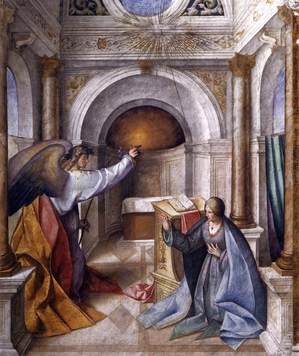I love the Syriac tradition of liturgical theology. Often I find it a far more satisfying liturgical tradition than the Latin church craziness I face. It is Semitic, very biblical and rich in humanity. I recommend that you immerse yourself in the poetry of Saint Ephrem, deacon and Doctor of the Church.
The Maronite Church is one of whose heritage is West Syrian theologically; historically it’s rooted in the mountains of Lebanon. Their Advent Season has already begun with what is called
the Season of Announcements (follow this link for more info on the season). This past Sunday was the Announcement to Mary. This coming weekend the Maronites will celebrate the Visitation of Elizabeth.
Father Steven Bonian, SJ, writes frequently on the sacred Liturgy of the West Syrian Church, the Maronites. See how he connects the Creator, creation and the Liturgy; the image of the Garden is key here for us Christians who are seeking salvation, that is, to dwell again in the Garden of Eden.
Father Bonian said about the Sunday of Mary’s Announcement:

Today, the Letter of Saint Paul to the Galatians (3:15-22), reminds us of how the promise made to Abraham is now being fulfilled through those who believe; those who live by the Law and the Torah of the heart through righteousness. To such as these –like Mary– is the gift of God and his promise handed down through his angels. The Gospel of Luke makes it clear that Mary is the righteous one who has gained the favor of God, and thus, inherited this Gift (Christ) and the Promise (Salvation).
In the Gospel-Icon of Mary and the Angel drawn for us by Saint Luke, and framed for us in this Sunday’s prayers –in the context of the relationship of the creator with his creation –the mountains, the earth, the sea, and the waves are rejoicing in God’s Word! Mary herself has become the New Earth (as Saint Ephrem would teach us) and true representative for all of God’s creation. The Son of God comes to dwell in her, and through her God has returned to live –as in Paradise— in the midst of his creation. Now in Mary, the new covenant, and God’s plan of salvation is being fulfilled. She has become the Cloud, the Pure Womb, the Fountain of Life and Blessings!
Continue reading The Season of Advent proposes reclaiming the Garden of Eden










